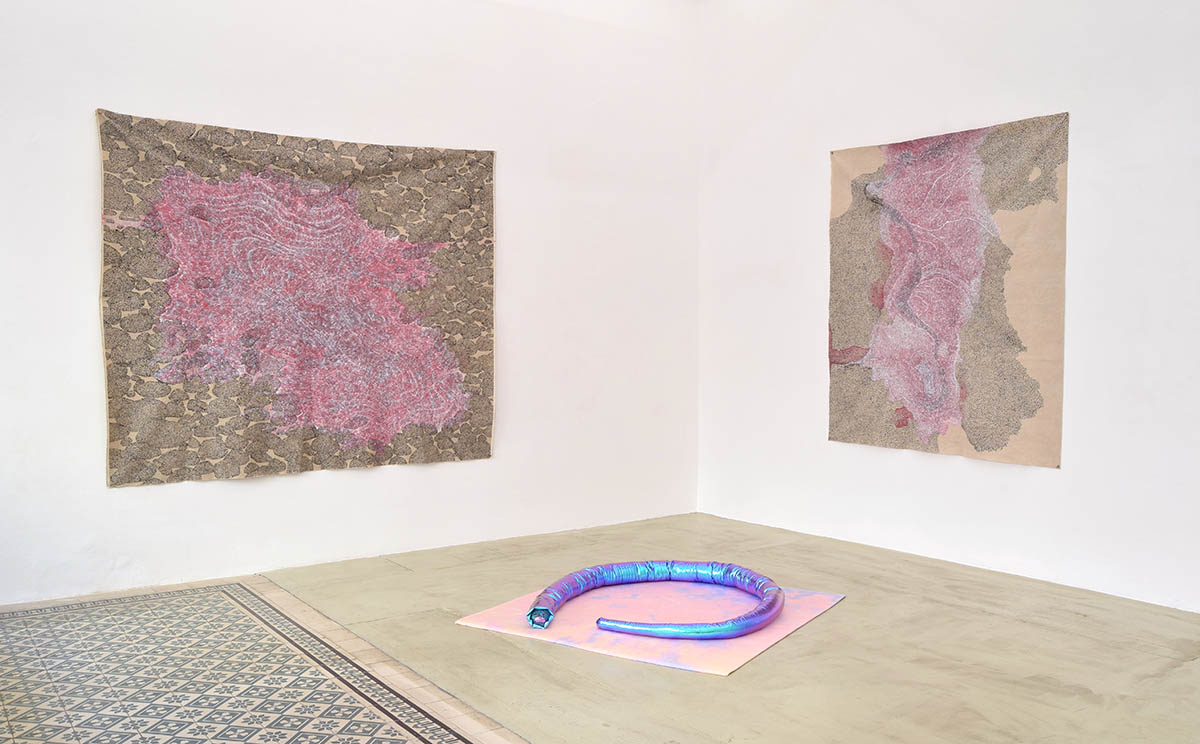
After working in admin, starting a clothing brand, washing dishes, and being a snowboard instructor in California he now finds himself as an artist living in a studio complex in an industrial part of the east of England. He would really love to have a dog.
How would you describe your art style?
For me to describe my style is pretty tricky. There’s a difference in style and process between my paintings and drawings, and my sculptures (and everything else) and I am regularly told that they could have been made by two different artists. The same could probably be said of my work from just a few years ago but to me it’s a result of a shift in focus and being more open rather than a shift in my interests. A large part of that development is going to be the outcome of recently doing a Masters and as that process is supposed to instigate change I guess that means it worked!
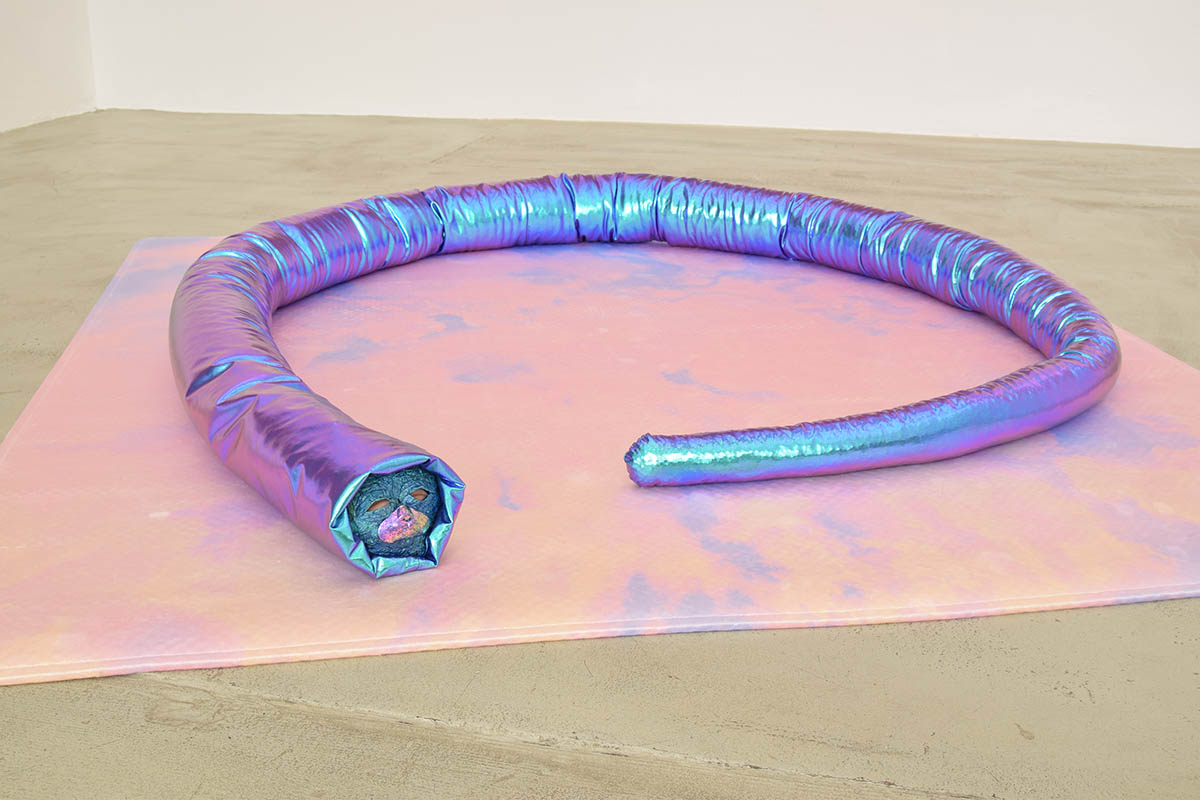
Despite any differences I would say that there’s a similar internal logic throughout my work, and all the different elements of my practice live in the same world. There is a vibrancy, an iridescence, a fizz to things. There’s also something quite crafty and homespun about it, and an oscillation between tongue-in-cheek and sincerity; Meteorology, archeology, and synth-pop with the sensibility of the Muppets?
What techniques do you use?
My work spans a lot of different media so I have a very broad spectrum of techniques that I use, but for the most part the actual processes are pretty simple. The paintings and drawings are perhaps the most straightforward. They’re often created from building up a surface of tiny marks over different washes of colour to create texture, form, and almost a flow of particulate matter. I like to use unstretched canvases that just hang directly on the wall which gives them a sculptural presence. My sculptures use cast samples of textures (including tree bark and household ornaments) combined with craft, upholstery, and toy making techniques. The tapestries I’ve made are machine woven, with the design created using digital collages which are themselves made from photographs of natural forms, textures, and also elements of my sculptures. These collages have also been animated to make video work that includes sampled sound and dialogue. The feedback loop of this process can be really exciting as it continuously opens up more and more territory to explore, and more and more references build up between the work and the outside world, and between the works themselves.
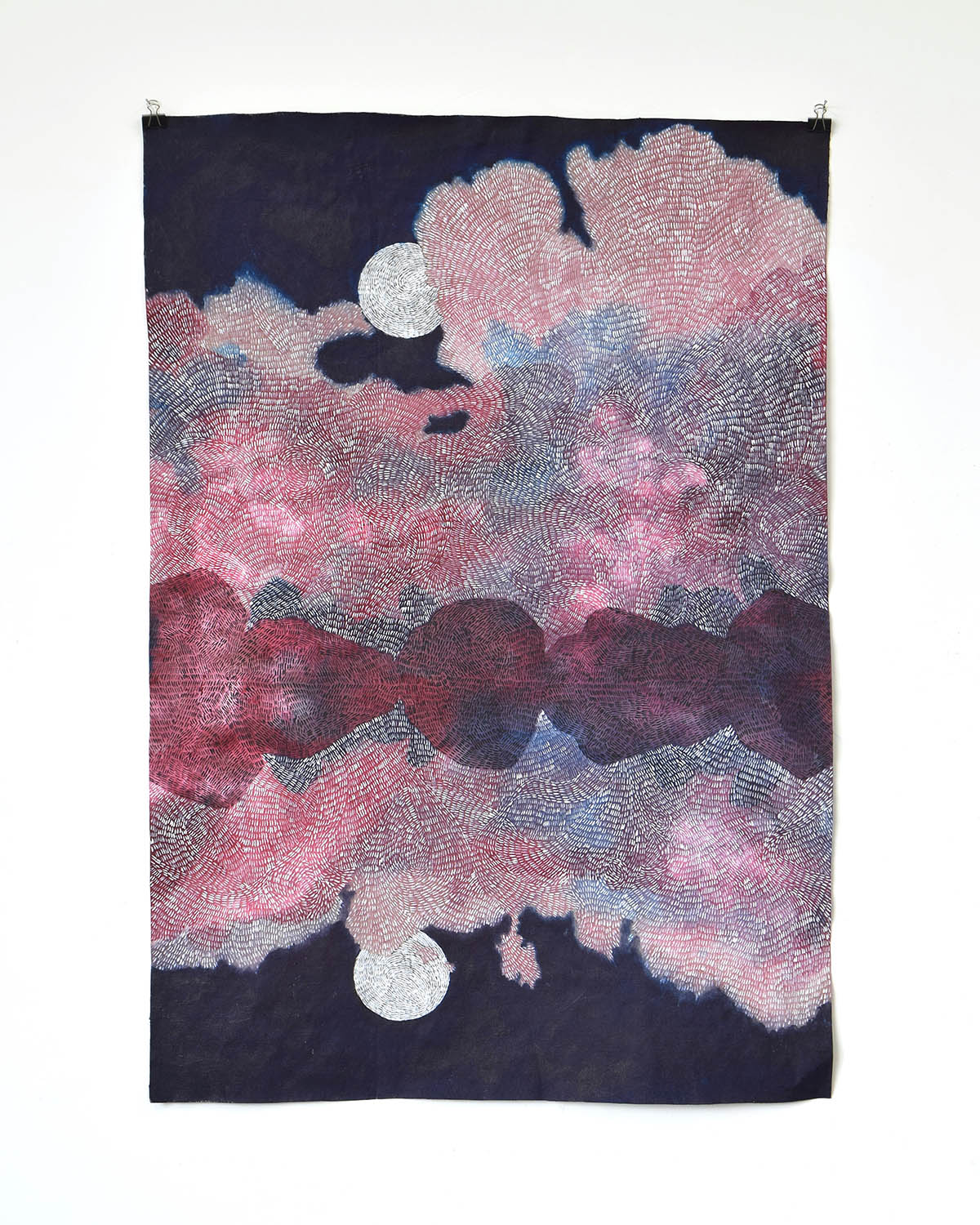
Kenji Lim, Ephemera Pooling, 2022, acrylic on unstretched linen, 107 x 75 cm, Galerie Reinthaler 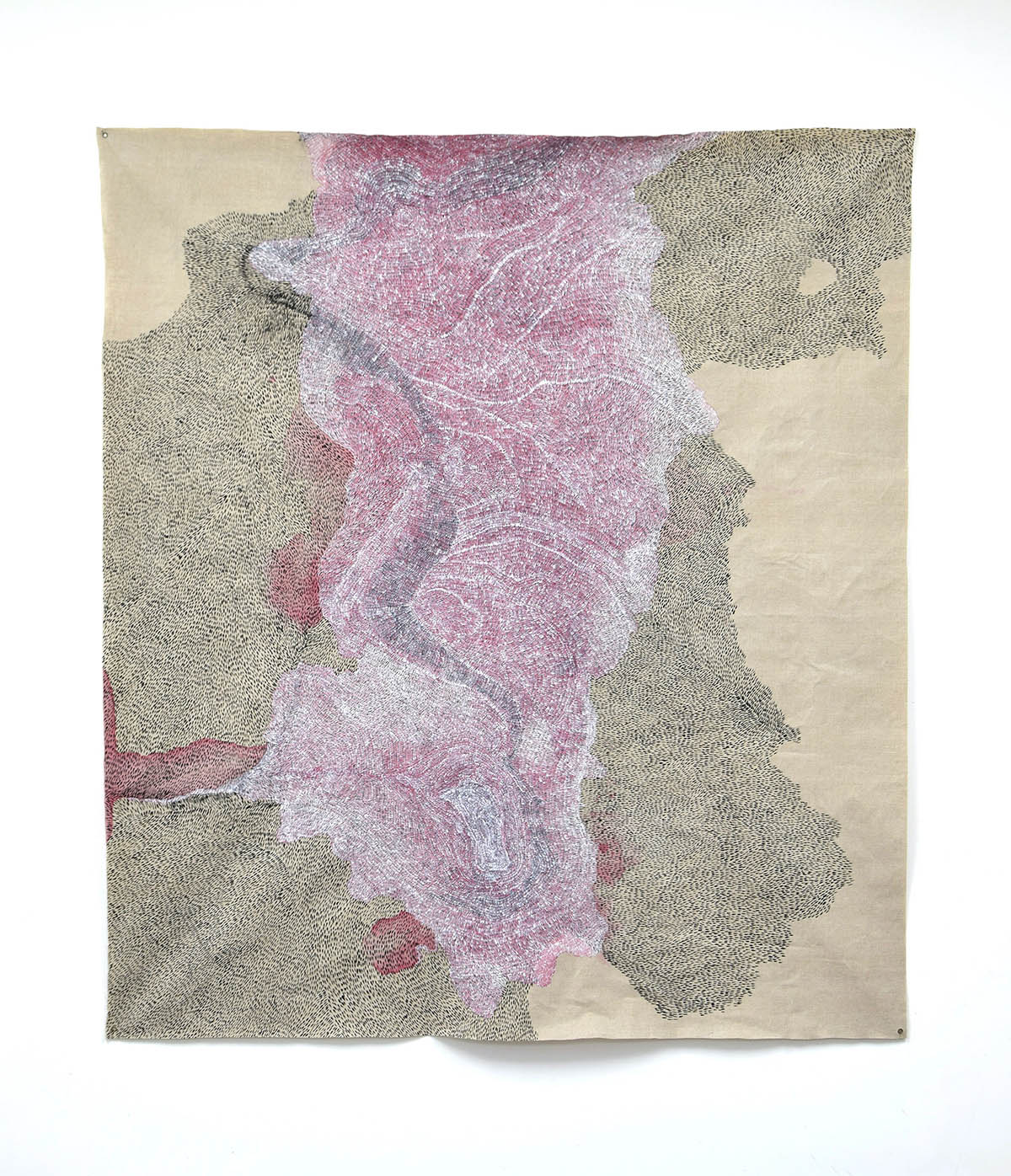
Kenji Lim, Study for Mapping the Known World (part 1), 2019_acrylic on unstretched linen, 171 x 151 cm, Galerie Reinthaler 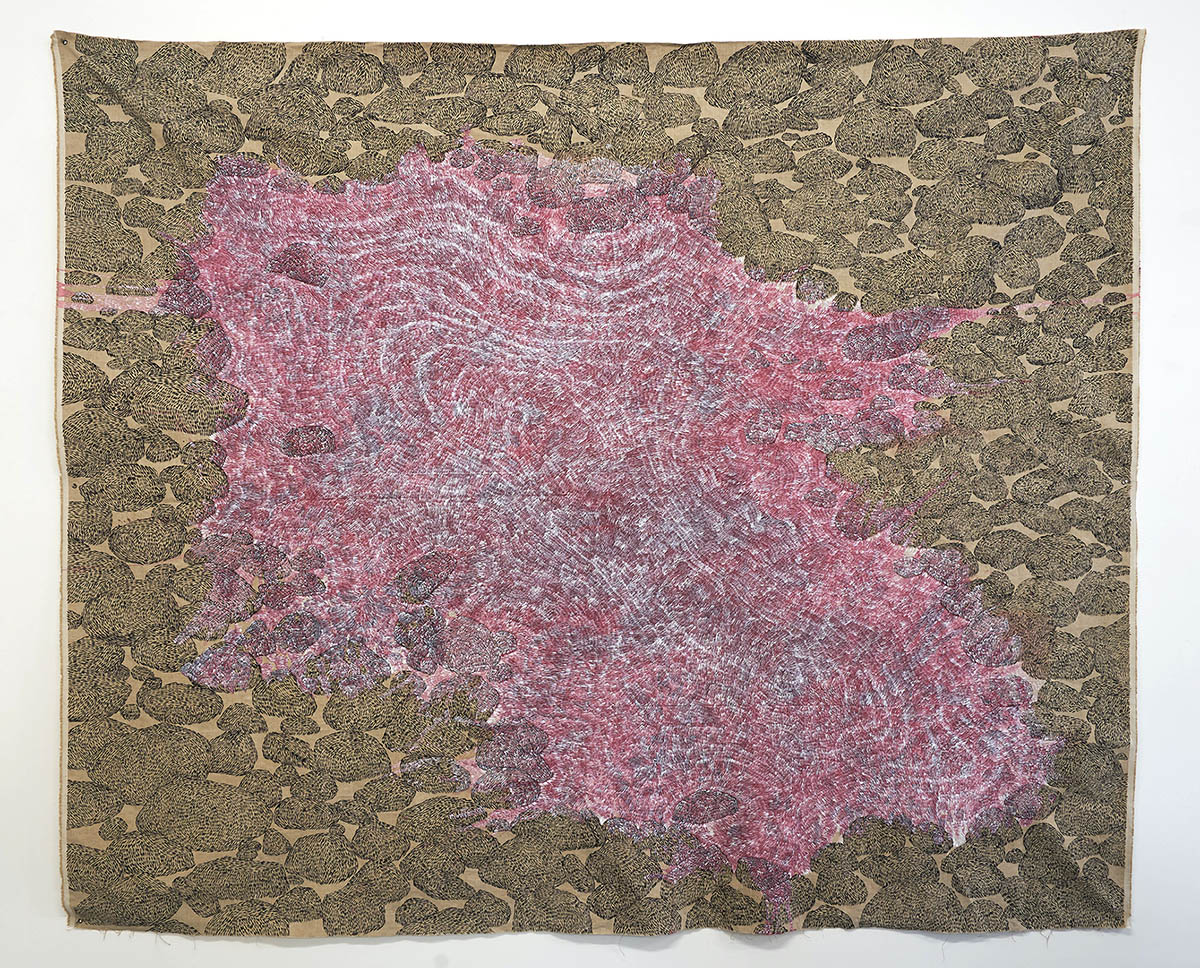
Kenji Lim, Study for Mapping the Known World (part 2), 2019, acrylic on unstretched linen, 185 x 220 cm, Galerie Reinthaler
What topics do you deal with?
I think that in the broadest sense I am interested in the way that “things” relate to other “things”, and the reassessment and reapplication of the human experience of the world to these relationships. I’m interested in ecosystems, and landscapes, and Romanticism, and domestic kitsch. If you’ll indulge me for a moment I can go into a bit of a deeper dive. The web of connections between living things are commonly described as an ecosystem. I’m interested in the concept of an ecosystem extending beyond this to also include other things like landscape, energy sources, and time. I’m also interested in the edgelessness of ecosystems. As we look to their edges, there are always more entanglements, making them effectively boundless. Another thing that I’m interested in is the very natural and human tendency to view everything in the world in terms of how it relates to us: what it can do for us, how we interact with it, why it is important or not important from a human point of view. By nature we have a very anthropocentric way of looking at existence but we also have a tendency to anthropomorphise, to apply human characteristics and desires to everything around us. This tendency to anthropomorphise is highly frowned upon in a western rational and scientific way of looking at the world. I am fascinated by what it might look like to remove this anthropocentrism but retain and expand the anthropomorphisation; to apply the romantic notion of the self to everything, and imagine everything with its own internal world and its own gaze. What does a mountainside see when it looks in the mirror? What do they think of their neighbours? What do they like to surround themselves with? If a cloud has as much of an internal world as a worm, then how might they relate to each other? In this way of thinking hierarchies flatten and the differences between subject and object are confused. The world suddenly become vibrantly alive and shifting, allowing us to contemplate the structures humans (especially in western culture) have built up to separate us from the world.
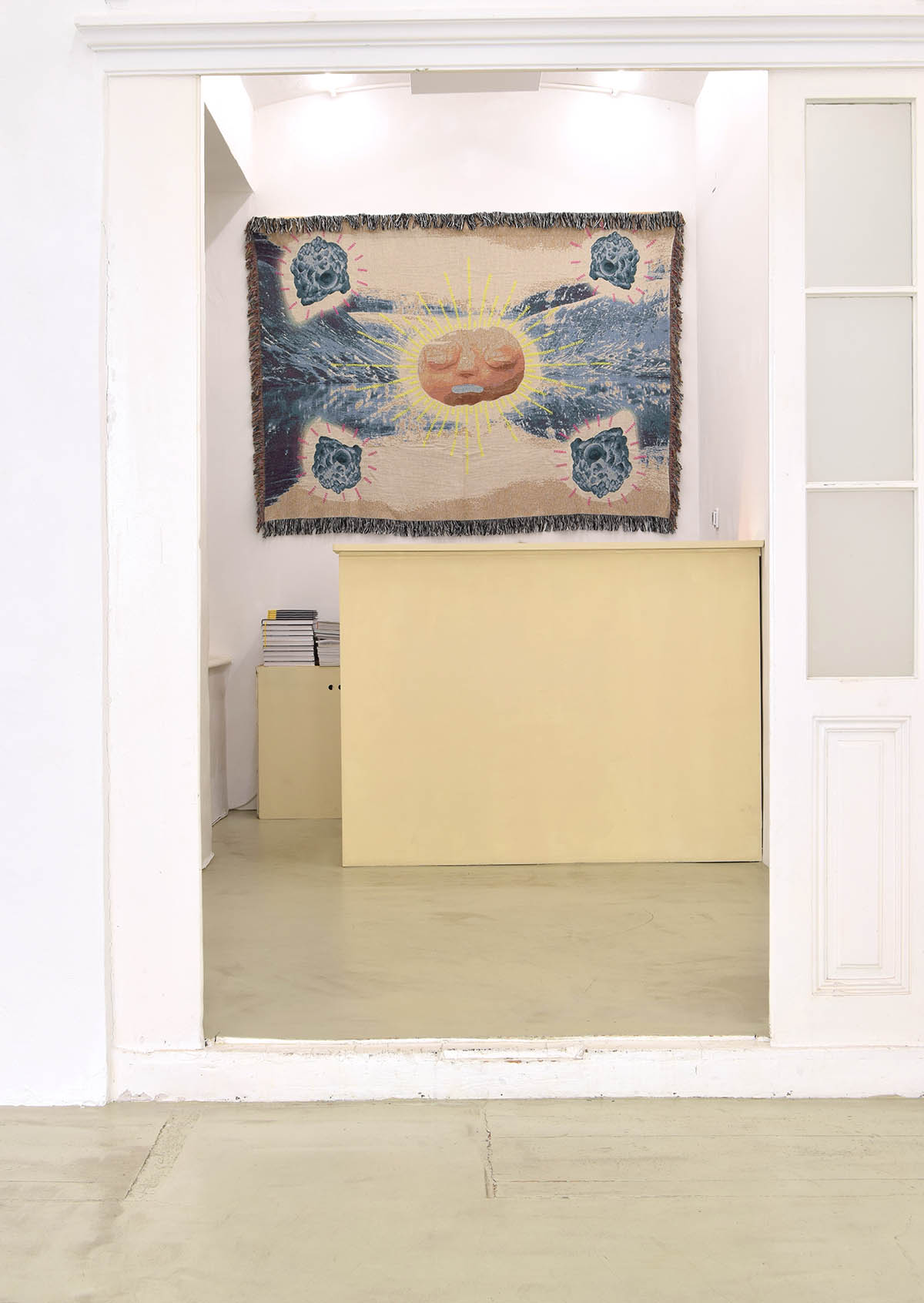
What makes you happy?
I love to go out for long walks, especially in the countryside. In the past these have been hikes that last days across Britain from place to place, through all different types of landscape, but any chance to get out of town to the woods, or the hills, or the coast is amazing. I grew up in the countryside but as a child I think you take that kind of environment for granted, and it wasn’t until I moved back there as an adult that I really began to explore, and to not only remember the things I knew as a kid, but to find new paths and to walk to the places on the horizon. I guess I’m what you might call an extroverted introvert and I need my time alone so having my own live/work space and getting out into the countryside really gives me that, but I also love seeing my friends and going to openings and the pub. Honestly all kinds of pubs are great: city, country, cheap, fancy, trendy, old-man. It’s also a great thing to do after a good long walk or a swim in a lake.
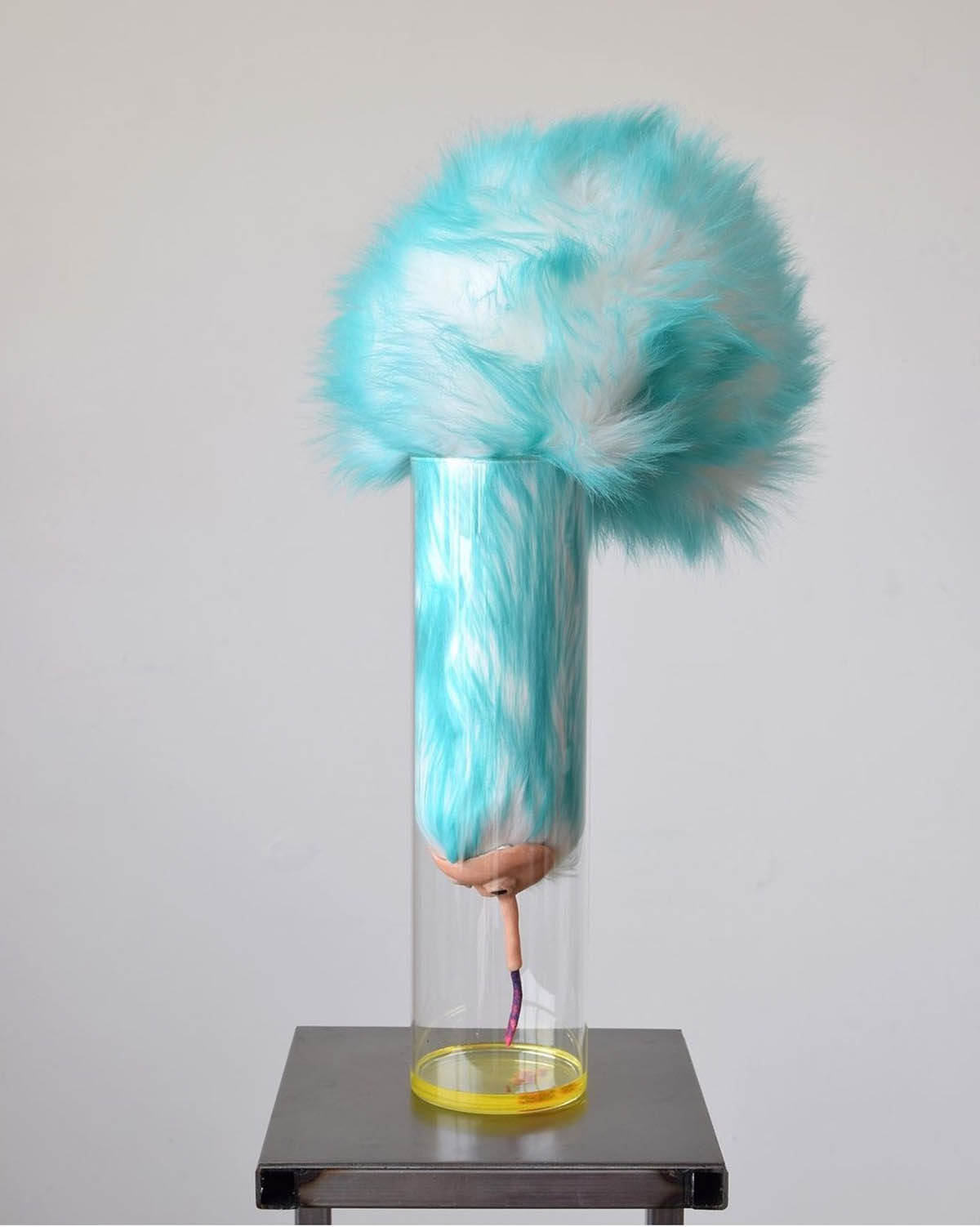
How do you spend your day? Do you have a regular schedule?
I live and work in a fairly industrial area in south Essex, just outside London. From my window I can see the bridge where the M25 motorway crosses the river Thames, and it’s a landscape of warehouses and docks. I have a live/work unit in a block of purpose built artist studios so I am constantly surrounded by my work, which I find really helpful. It’s also pretty isolated when you don’t have a car, so there are fewer distractions and it can almost feel like being on a residency at times. When I’m working on a project it means that I can tailor my schedule to what I need it to be; I can start at 7am or 7pm, dip in and out, or work non stop for a few days. As I don’t have to travel to the studio it feels less like a job (with a commute) and more like a life, and so the work ebbs and flows like that. As I use so many different materials and processes I need to be able to change my set up regularly so the studio is very open plan and I can put up a table to do some sewing or cast some resin, and take it down when I need space to paint, and so on.
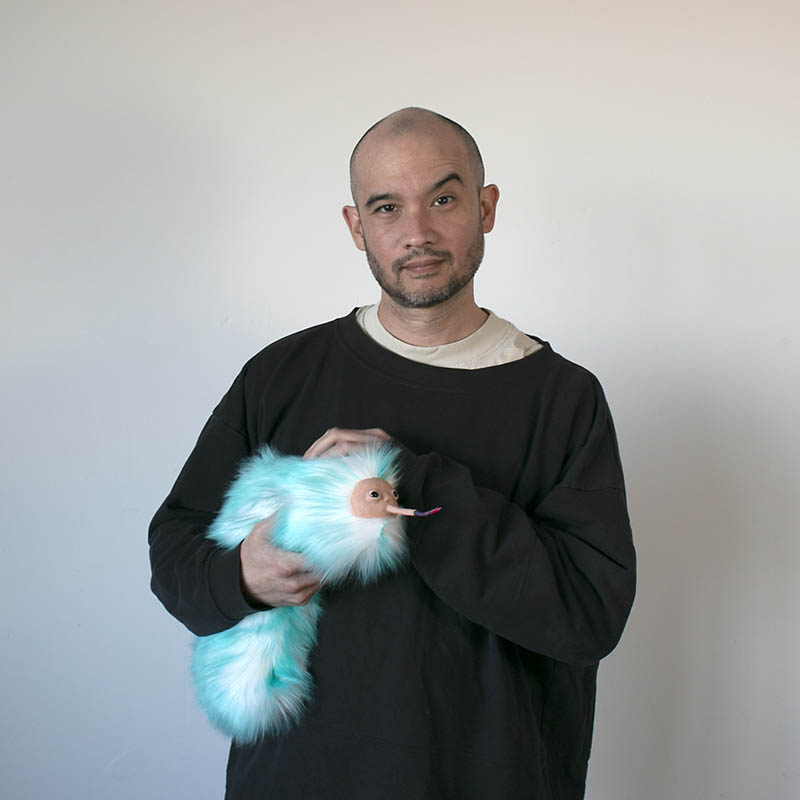
„Shivering Cloud“. You have an exhibition at Galerie Reinthaler in Vienna right now. What will people see there?
The exhibition title, Shivering Cloud, speaks to the vibrancy of the particles in the large paintings that flow and swirl, but also to the sense of liveliness and alive-ness of the work. As you enter, in the vitrine window is the curious sculpture Hummysuckle, a furry being who stretches for a drink of liquid at the bottom of a long jar. In the exhibition space the central sculpture, A Sleeping Beauty, lies curled on a rug surrounded by abstracted paintings and drawings, a place where it can dream and see the world with blurry eyes. The pieces surrounding it on the walls vary in size from monumental to personal and relate to environment, mapping, and the landscape. In the back room, facing you as you enter the gallery is a tapestry, Situated Romantic Symbiosis, a quasi-religious vision that points further to alternative internal worlds. If you ask you will also be able to see a book of dip pen drawings that was made over the course of two years called The Broken Whiteness of Light, about white and blue and the fractured particulate nature of what we see.
What projects are you working on right now?
Most of the larger scale projects are for now just at the conception stage. I have plans to learn computer programs to help me to develop larger scale sculptures and make 3D animations. I’m also working on a series of drawings that are essentially new characters based on my previous work mashed up with European portraiture. It’s really a continuing the process of expanding my body of work and allowing it to lead me in the direction that excites me the most.
Kenji Lim – www.kenjilim.com, www.instagram.com/kenji_lim_/




